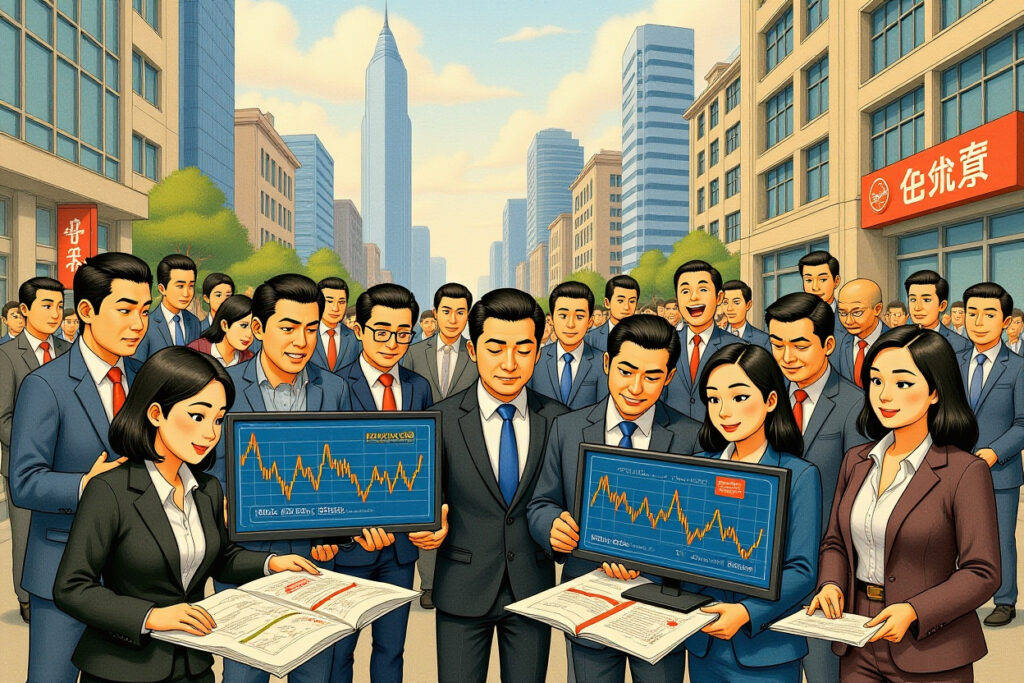The global energy landscape is undergoing its most dramatic transformation in decades. Following Russia’s invasion of Ukraine, traditional supply routes have been severed, forcing nations to scramble for alternatives and creating unexpected new market leaders. According to Bloomberg projections, China is poised to surpass Germany as the world’s largest pipeline gas importer in 2023—a symbolic shift that underscores how completely the war has rewritten global energy trade rules. This transition from European to Asian dominance in pipeline imports represents one of the most significant energy market realignments of the 21st century. The world’s largest pipeline gas importer title is about to change hands, reflecting broader geopolitical and economic currents reshaping global commodity flows. The reconfiguration of energy relationships will have lasting implications for energy security, pricing, and environmental policies worldwide. The ascent of China as the world’s largest pipeline gas importer signals a new era in global energy geopolitics. This shift didn’t occur in isolation but rather resulted from a perfect storm of geopolitical conflict, strategic infrastructure investments, and changing national priorities across continents. The transition of the world’s largest pipeline gas importer designation from Germany to China tells a story of adaptation in the face of unprecedented energy challenges. Europe’s deliberate decoupling from Russian energy has created both opportunities and disruptions that will echo through global markets for years to come. Meanwhile, China’s methodical development of pipeline infrastructure positions it to capitalize on Russia’s need for new export markets. The emergence of a new world’s largest pipeline gas importer represents more than just statistical leadership—it symbolizes the eastward shift of energy demand and geopolitical influence. As Western nations accelerate renewable transitions, Asia’s growing appetite for fossil fuels continues to shape global markets and climate negotiations. The changing identity of the world’s largest pipeline gas importer offers critical insights into future energy trends and geopolitical alignments. The seismic shifts in global energy trade following Russia’s invasion of Ukraine have created winners and losers across continents. Europe’s rapid pivot away from Russian pipeline gas represents one of the most dramatic energy policy adjustments in modern history. Before the conflict, Germany sourced approximately 55% of its natural gas from Russia through pipelines like Nord Stream. This dependency became untenable following the invasion, forcing Berlin to undertake an emergency energy transformation. The German government moved with remarkable speed to secure alternative supplies, primarily through liquefied natural gas (LNG) imports. Chancellor Olaf Scholz announced the construction of Germany’s first LNG import terminals, with projects in Wilhelmshaven and Brunsbüttel advancing at unprecedented pace. The country signed long-term contracts with LNG producers in Qatar, the United States, and other suppliers to replace lost Russian volumes. Germany’s transition came at significant cost—both financially and environmentally. Spot LNG prices reached record levels in 2022, with European benchmarks trading over 70% higher than pre-invasion averages. The increased reliance on LNG also raised concerns about higher emissions from the liquefaction and transport process compared to pipeline gas. The German experience demonstrates how quickly nations can adapt their energy infrastructure when faced with supply emergencies. However, it also highlights the premium prices countries must pay when making abrupt transitions under pressure. Germany’s reduction in pipeline imports created the opening for China to claim the title of world’s largest pipeline gas importer. While Europe was cutting ties with Russian energy, China was deepening its energy relationship with Moscow. The Power of Siberia pipeline, which began operations in 2019, has become the cornerstone of China’s pipeline gas strategy. The 3,000-kilometer pipeline connects Russia’s gas fields in eastern Siberia to northeastern China, with capacity steadily increasing toward its planned maximum of 38 billion cubic meters annually. In February 2022, just weeks before the invasion of Ukraine, China and Russia signed a new 30-year contract for additional gas supplies through a proposed Power of Siberia 2 pipeline. This agreement would transport up to 50 billion cubic meters annually from western Russia to China via Mongolia. China’s pipeline infrastructure development extends beyond Russian imports. The Central Asia-China gas pipeline system brings Turkmenistan, Uzbekistan, and Kazakh gas to western Chinese provinces. Myanmar also supplies gas through pipelines to southern China, diversifying China’s import routes and reducing maritime transport risks. China’s methodical development of pipeline infrastructure contrasts sharply with Europe’s emergency LNG pivot. While European nations paid premium prices for spot market LNG, China secured long-term pipeline contracts that typically offer price advantages over LNG imports. The stability of pipeline imports provides China with energy security advantages as it becomes the world’s largest pipeline gas importer. The transition in global gas trade has triggered significant market disruptions and price volatility. Europe’s sudden entry into the LNG market created intense competition with traditional Asian buyers, driving prices to record levels in 2022. The LNG market became increasingly fragmented as countries pursued energy security above market efficiency. Price differentials between regions widened dramatically, with European prices trading at unprecedented premiums to Asian benchmarks. This volatility created windfall profits for LNG producers while imposing heavy costs on import-dependent nations. The restructured gas trade flows also increased transportation emissions as LNG tankers traveled longer distances to reach European terminals instead of Asian markets. The market disruption accelerated investment in new LNG export capacity, particularly in the United States and Qatar. However, these projects take years to develop, meaning tight market conditions may persist through the mid-2020s. The price shock also accelerated Europe’s commitment to renewable energy and energy efficiency, potentially creating permanent demand destruction for gas in some sectors. The changing patterns of gas trade have significant implications for global climate efforts. Pipeline gas typically has lower lifecycle emissions than LNG due to the energy-intensive liquefaction and transport process. As Europe shifts from pipeline imports to LNG, the carbon footprint of its gas consumption has increased. Meanwhile, China’s growing pipeline imports could potentially lower the emissions intensity of its gas supply compared to increased LNG imports. However, any climate benefits must be weighed against the overall expansion of fossil fuel infrastructure and consumption. The new gas trade patterns also influence national climate policies. Europe’s energy crisis has accelerated renewable deployment and energy efficiency measures. China’s secure pipeline supplies may reduce urgency for renewable transition in the power sector, though the country continues to lead global renewable energy investment. The geopolitical implications of changing gas flows extend beyond immediate market impacts. Russia’s pivot toward Asian markets reduces its leverage over European nations while creating new dependencies with China. This realignment could reshape diplomatic relationships and alliance structures for decades. Europe’s increased engagement with LNG suppliers in the United States, Qatar, and Africa creates new strategic partnerships. Meanwhile, China’s deepening energy ties with Russia and Central Asian nations strengthens its regional influence through energy diplomacy. The restructuring of gas trade has also impacted global energy governance institutions. Traditional suppliers like Russia have lost influence in European markets, while LNG exporters including the United States and Qatar have gained market power. The transition has implications for energy transition financing as well. Development banks and private investors must reassess infrastructure projects based on new trade patterns and demand projections. Pipelines that seemed economically viable before the conflict may now face different economic calculations. The changes in gas trade patterns will have lasting effects on global energy markets, geopolitical relationships, and climate progress. As China assumes the position of world’s largest pipeline gas importer, several trends will shape the future of global gas markets. The ongoing conflict in Ukraine continues to create uncertainty about future energy flows. A resolution could potentially reopen some Russian gas exports to Europe, though many analysts believe the energy divorce is permanent. European nations continue to diversify their gas sources while accelerating renewable energy deployment. The REPowerEU plan aims to eliminate Russian fossil fuel imports by 2027 while increasing renewable energy targets. Continued high LNG prices could accelerate demand destruction in European industries, potentially creating a permanent reduction in gas consumption. Asian demand growth will be crucial for global gas markets. China’s economic trajectory will determine whether its gas imports continue growing or plateau as renewable energy expands. Other Asian nations including India, Pakistan, and Southeast Asian countries will influence global LNG demand patterns. Technological developments will also shape future gas markets. Advances in renewable energy, battery storage, and hydrogen production could disrupt gas demand projections. Carbon capture and storage technologies could potentially extend the role of gas in decarbonized energy systems. The evolving regulatory landscape for methane emissions will impact both pipeline gas and LNG operations. Stricter methane regulations could advantage some supply sources over others based on their emissions profiles. The financial sector’s approach to fossil fuel financing will influence infrastructure development. Many international banks have adopted policies limiting financing for new fossil fuel projects, particularly coal but increasingly oil and gas as well. The restructuring of global gas trade following Russia’s invasion of Ukraine represents one of the most significant energy market realignments in decades. China’s emergence as the world’s largest pipeline gas importer symbolizes broader shifts in economic power and geopolitical influence from West to East. Europe’s rapid pivot from Russian pipeline gas to diversified LNG imports demonstrates both the vulnerability and resilience of modern energy systems. While the transition came at high cost, it has accelerated Europe’s commitment to energy security and renewable transition. The market volatility and price spikes triggered by the conflict have underscored the continuing importance of energy security in national strategic planning. The experience has reminded governments that reliable energy supplies remain fundamental to economic stability and national security. The changes in gas trade patterns will have lasting effects on global energy markets, geopolitical relationships, and climate progress. As the world continues to navigate the energy transition, understanding these shifting dynamics becomes increasingly important for policymakers, investors, and citizens alike. The transformation of global gas markets continues to evolve rapidly. Stay informed about energy market developments by subscribing to our energy market updates. Understanding these complex market dynamics is essential for businesses, investors, and policymakers navigating the evolving energy landscape.
China Poised to Become World’s Largest Pipeline Gas Importer Amid Global Energy Shift




